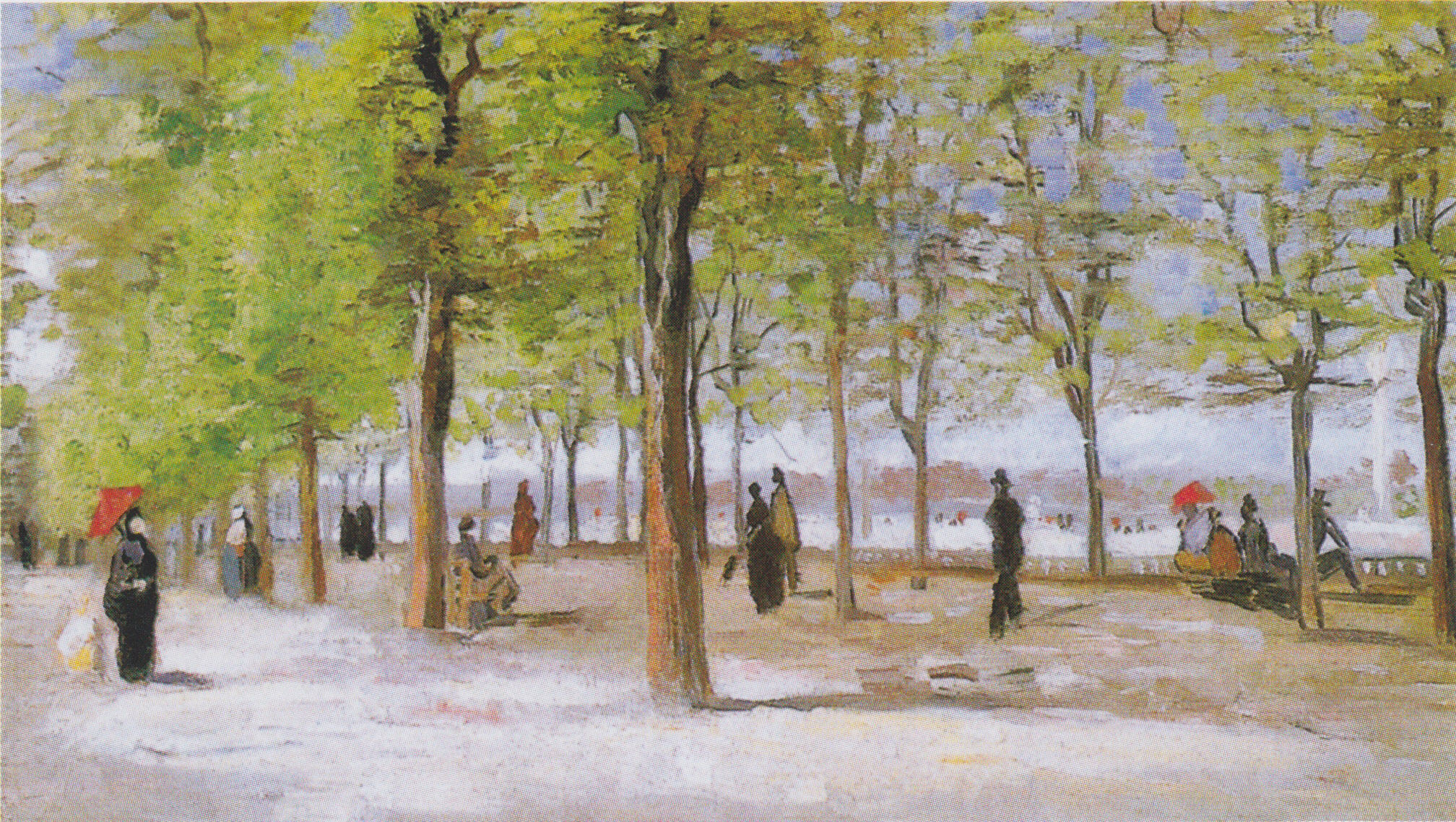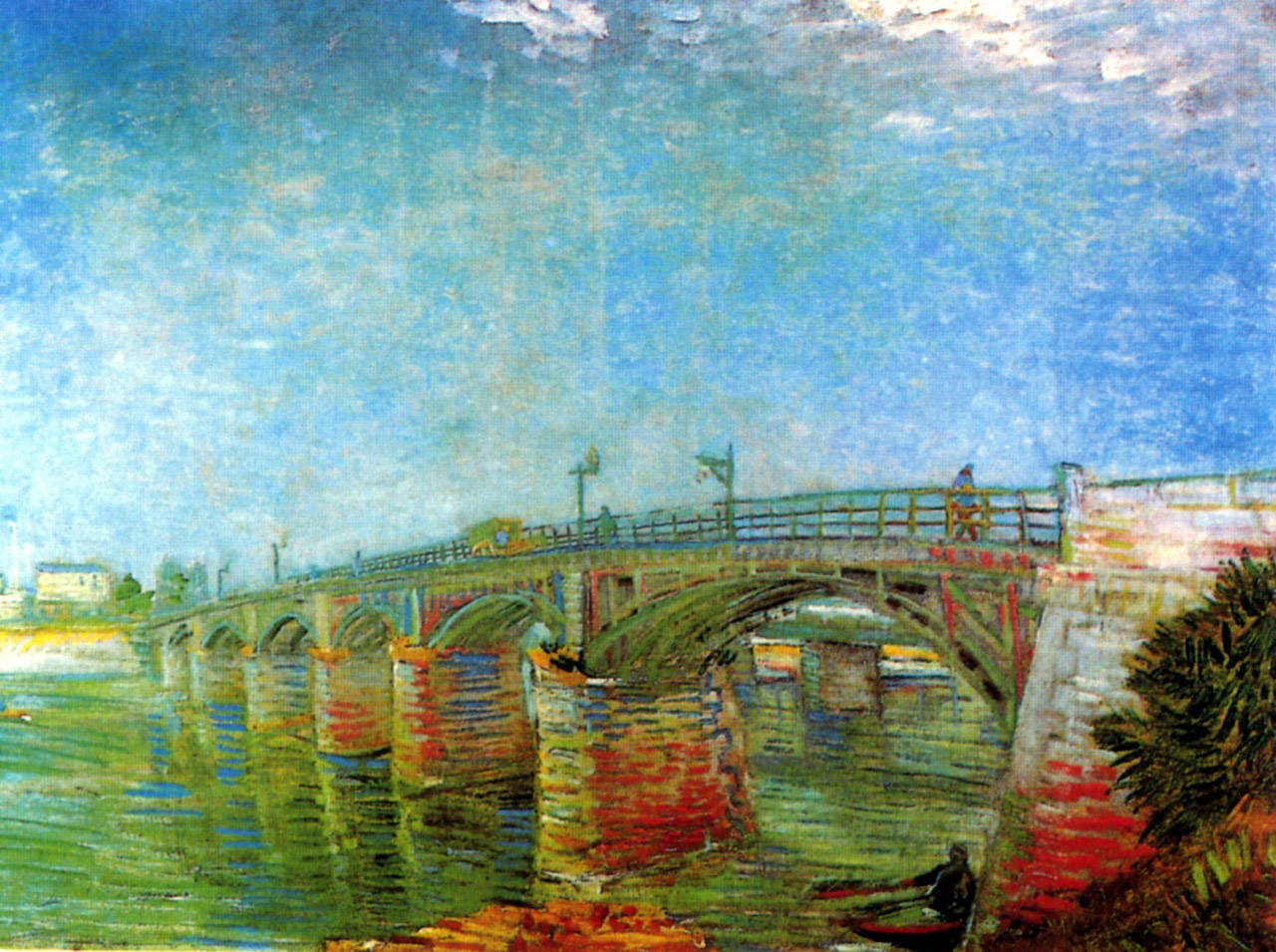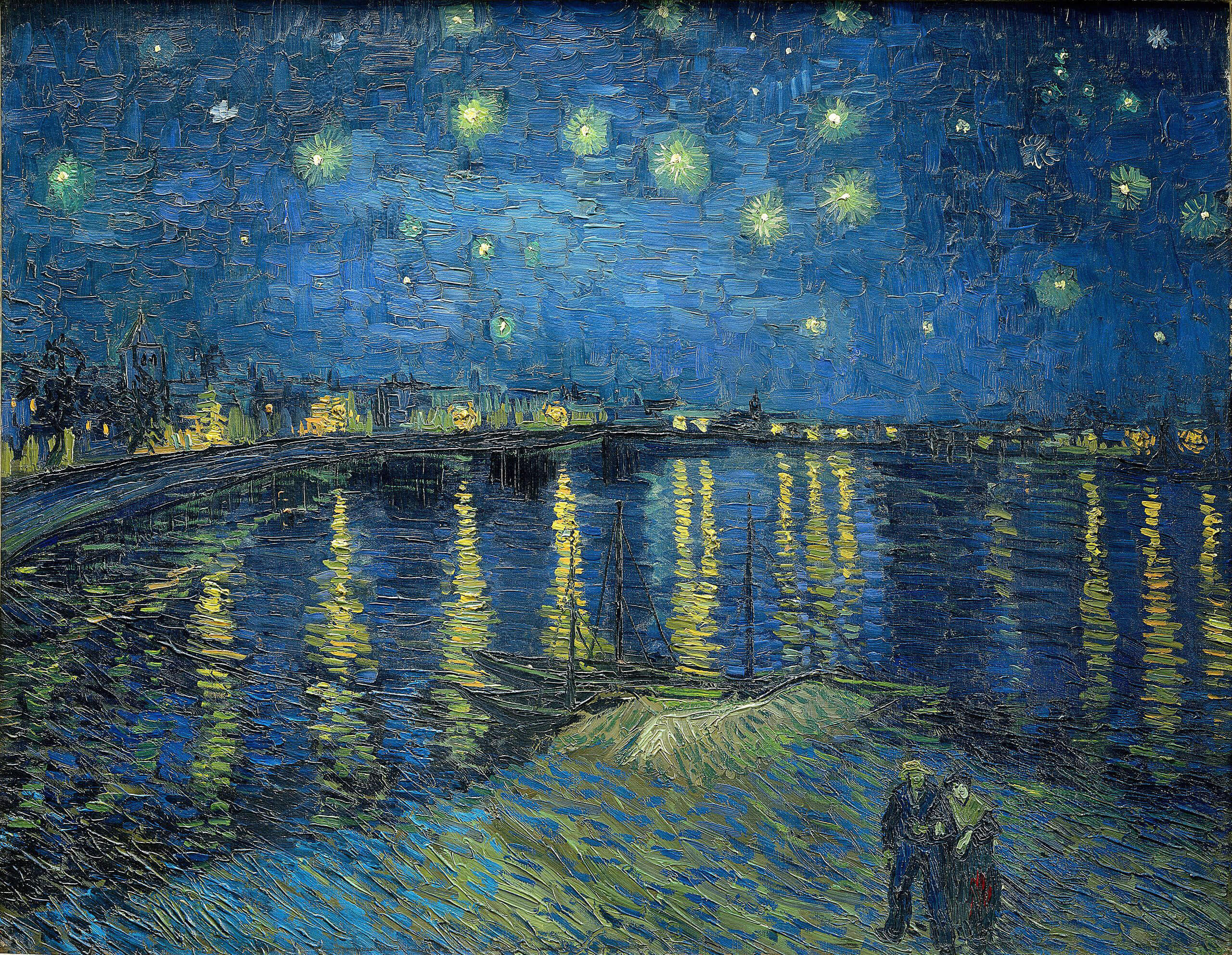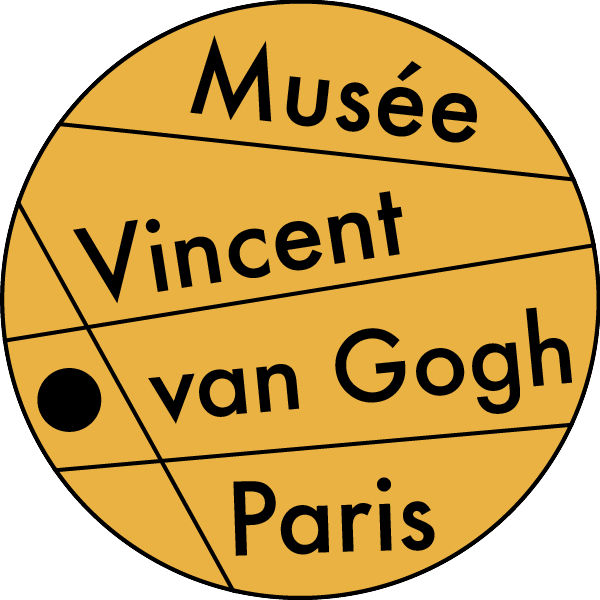VINCENT & FRANCE
Vincent made his first visit to Paris in May 1873. He spent a few days in the city, visiting museums and the headquarters of his employers, the international art dealers Goupil & Cie. A permanent transfer followed in May 1875. Vincent worked in Goupil & Cie’s headquarters each day and lived in a small rented room at an unknown address in Montmartre. However, a year later, Goupil dismissed him, officially because of an unannounced absence during the Christmas rush, but his none-too-friendly attitude to clients must have played a part. This marked the end of Vincent's career in the art trade and he left France.
Ten years later, in February 1886, after his peregrinations had taken him to Ramsgate, Isleworth, Dordrecht, Amsterdam, Brussels, Drenthe, Nuenen and Antwerp, Vincent van Gogh was so poor that he could not pay his rent, so he hotfooted it to Paris to move in with his brother, Theo.

“Gate in the Paris Ramparts
”, Paris 1887, oil on canvas, Van Gogh Museum, Amsterdam.
The sudden move ended up being particularly fortuitous for van Gogh, who was immediately thrust into a milieu of young avant-garde artists experimenting with new styles. It was the beginning of a two-year period that resulted in a transformative shift in his work, from the dark, somber hues of his early realist paintings to the colorful, textured flowers and portraits that most people associate with van Gogh today.
The themes he painted likewise changed, with rural labourers giving way to cafés and boulevards, the countryside along the Seine and floral still lifes. He also tried out more ‘commercial’ subjects, such as portraits. Vincent mostly acted as his own sitter, however, as models were relatively expensive.

“Lane at the Jardin du Luxembourg”, Paris 1886, watercolor on paper, Clark Art Institute, Williamstown, Massachusetts.
He was soaking up all the influences around him. The Impressionists, who were already the dominant force on the French capital’s cultural scene, were busy with their explorations of light and shadows. The Pointillists, also known as the “divisionists,” were separating out colors into individual dots dabbed on canvas to form discernable figures. The Cloisonnists, meanwhile, were painting with bold and flat forms separated by dark outlines. Vincent van Gogh became exposed to all these styles, and many more, and he tried his hand at all of them.
Japanese printmaking was one of Vincent’s main sources of inspiration. The prints acted as a catalyst: they taught him a new way of looking at the world. Very few artists in the Netherlands studied Japanese art. In Paris, by contrast, it was all the rage. So it was there that Vincent discovered the impact Oriental art was having on the West. He began to collect ukiyo-e prints and he made three copies of ukiyo-e prints, The Courtesan and the two studies after Hiroshige. The influence of "Japonaiserie" is still evident in his later works reflecting the Japanese tradition and culture with his strong outlines, the use of black contours, the use of color and the cropped compositions.

“Courtesan
”, Paris 1887, oil on canvas,
Van Gogh Museum, Amsterdam.
In Paris, his ideas about painting were challenged, and he learned new techniques and styles from many of the artists he met. He struck up friendships with artists such as John Peter Russell, Émile Bernard, Henri de Toulouse-Lautrec and Paul Signac, organised exhibitions, advocated for an artists’ association, and began building an art collection with his brother.
He was particularly inspired by the work of Adolphe Monticelli, a painter from Provence who was known for his thickly painted and colorful still lifes of flowers. Monticelli’s work was what later drew van Gogh to the French city of Arles. His work changed markedly during this time; he began using brighter, lighter colours and experimenting with different painting techniques.

“The Seine Bridge at Asnieres”, Paris 1887, oil on canvas, Private Collection.
Vincent enjoyed Paris at first, but he found urban life stressful, and after two years, he left the city and moved on to live in the south of France, in search of warmer weather, and above all to find the bright light and colours of Provence so as to further modernize his new way of painting. Following a train journey that lasted a day and a night, he arrived on 20 February 1888 in Arles, a small town on the River Rhône.

“The Harvest", Arles 1888,oil on canvas, Van Gogh Museum, Amsterdam.
Van Gogh’s work from Arles is often associated with the colour yellow, which plays a prominent role in his works from that period. Van Gogh worshipped the Provençal yellow sun and its sulphur or gold coloured light. It flooded the landscape and enabled him to give his paintings the strong, unbroken colours that he had yearned for. The modern artist of the future, in Van Gogh’s view, would be a colorist as the world has never seen. The southern light was of prime importance for a modern palette, and he more than ever distanced himself from the grey palette of his Dutch years under a northern light.

“The Sower
”, Arles 1888, oil on canvas,
Kröller-Müller Museum, Otterlo, Netherlands.
Vincent was highly productive during this period and made numerous paintings and drawings in and around Arles. He developed an expressive, individual painting style characterised by bold colours and dynamic brushstrokes. He befriended the postal official Joseph Roulin. He lived with Paul Gauguin and they worked in Arles for two months.
Van Gogh and Gauguin worked hard together and their collaboration resulted in some exceptional paintings. At the same time, however, the two men had very different views on art, which led to frequent, heated discussions.
Painting the human figure had always been one of Van Gogh’s most important artistic goals, and he had a special love for peasant paintings. In Arles, he decided that he wanted to modernize this genre, by choosing the subject of the sower. He also painted portraits and still-lives, and confessed to Theo:
"I am painting with the gusto of a Marse-illais eating bouillabaisse ”.
On 23 December, Van Gogh suffered a mental breakdown – probably a first sign of his illness – and cut off a part of his left ear, wrapped it in newspaper and presented it to a prostitute in the nearby red-light district. He spent some time in the hospital after a second breakdown in February 1889. He continued to work in Arles for a few more months, but had himself interned voluntarily in the asylum in Saint-Rémy on 8 May 1889.

“Starry Night Over the Rhône”, Arles 1888, oil on canvas, Musée d'Orsay, Paris
In between attacks, Vincent made numerous paintings and drawings, first in the asylum and its gardens and later beyond, among the olive gardens and cypresses, in the Alpilles mountains and in the village. Saint-Rémy served as the setting for many of his most famous works.
After a little more than a year, on 16 May 1890, he left for Auvers-sur-Oise, wishing to return to the north and tired of being in the asylum. However, two months later on 27 July, he tried to commit suicide by shooting himself with a revolver. He died two days later, with Théo at his side.
